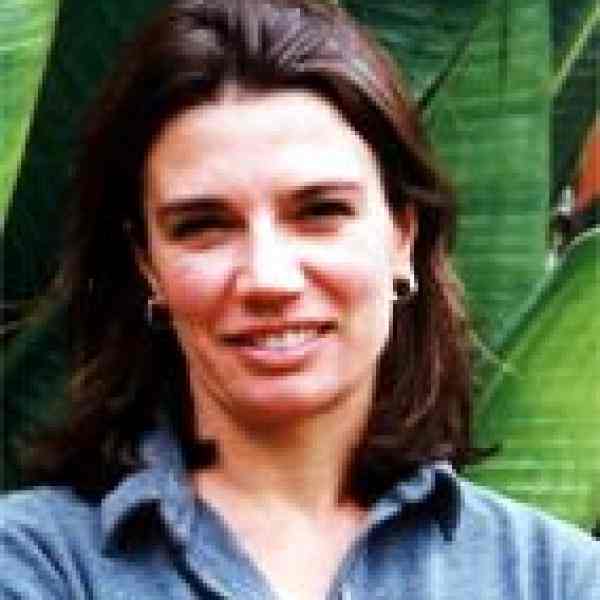Introduction
Anna Zucchetti promotes an integrated model of sustainable development for Peru's valley areas threatened by urban sprawl. She is preserving green spaces for city dwellers and valley residents, halting ecological damage, maintaining local culture, and improving the economic circumstances of various populations.
The New Idea
Anna Zucchetti promotes an integrated model of sustainable development for Peru's valley areas threatened by urban sprawl. She is preserving green spaces for city dwellers and valley residents, halting ecological damage, maintaining local culture, and improving the economic circumstances of various populations.
The Problem
Set against the backdrop of a desert coast, Peru's fertile river valleys play an indispensable role in the country as the only areas suitable for large-scale human inhabitation. Nationally, there are fifty-two such valleys, which have been traditionally cultivated on a low scale by Peru's indigenous peoples with cities and towns located along the arid flanks of the valleys. Urbanization, particularly around the city of Lima, has threatened and, in many cases, destroyed this traditional ecological balance. The Lima metropolitan area has one of the largest population densities in Latin America, with approximately eight million inhabitants–nearly one-third of the country's total population and two-thirds of its industries–augmented by a burgeoning number of shantytowns reaching out from the city's borders. This urban sprawl is causing severe environmental degradation in the region, as communities spring up in a haphazard fashion with little planning or respect for the natural environment. Unproductive land and overpopulation, moreover, reduce economic possibilities for those living in peripheral areas. The Lurín Valley has valuable resources, including a clean seasonal river, an ecological sanctuary, and several pre-Incan and Incan archaeological sites. It has the advantage of being close to Lima and accessible to tourists. It has enormous economic and cultural potential if it is not converted into another metropolis. Lurín is the last green valley in the Lima area, as suburbanization has already destroyed the Cillón and Rímac river valleys. In the Lurín Valley alone, 17 percent of the six thousand hectares of agricultural land have already been lost and 72 percent of farmers claim that farming there no longer provides enough income to sustain their homes. As a result, large numbers of young people from the Valley area have migrated to the cities to find opportunities for work and education. Local identity and forms of cultural expression are disappearing as mainstream culture subsumes traditional ones.
The Strategy
Anna's strategy is based in increasing civil society capacity to sustainably manage local development. Her organization, OACA, through its program ValleVerde, or Green Valley, first builds on existing technical teams and forms alliances in all sectors. Next comes an investment fund with contributions from international funders and private businesses, used to promote local economic and environmental projects. Citizens and landowners also form an oversight committee that voices demands and proposals to program managers and local authorities. Finally, Anna works with government representatives to improve municipal leadership in the Lurín Valley and formally implement a local initiatives fund. ValleVerde increases consciousness and builds consensus among the residents about the importance of protecting the region through continuous press campaigns, a play about the Valley's past and future, a bi-monthly bulletin, an audiocassette for buses, an educational kit for schools, and a web page. Anna fosters the full involvement of those who respond to her marketing efforts by challenging them to contribute to proposals for land regulation and farmland protection. A core component of her strategy is the development of so-called "eco-museums" and tourist services in the Valley. ValleVerde takes inventory of all of the potential tourist attractions, local artisans, historic sites, and traditional workers in the area and encourages them to work together in an association, through which they market and solicit resources jointly. The museums present the everyday life and work of the Valley's people and set the foundation for full-blown tourism endeavors. Anna is creating a circuit of mini-museums, which will include sites focused on dairy farmers, guinea pig breeders, weavers, wine producers, and archeologists. This program generates business for local producers and provides Lima residents with recreational options outside the city, strengthening and spreading socio-cultural knowledge, providing foreign visitors with more tourist options, and fortifying movements to protect the valley's ecological and archeological resources through demonstration of profitability. Anna is also fostering small businesses and micro-enterprises in the valley by creating a Local Initiatives Center, developing training programs in business administration and organization, and implementing a program of technical assistance and credit to agricultural producers and providers of services for tourists.
The Person
Italian by birth, Anna traveled often with her family as a child. Her mother was involved in social movements and always promoted in her a strong social conscience. As a child, Anna organized a cooperative of young children to produce their own newspaper in which they discussed their problems in the school. Anna attended an experimental high school with very horizontal relationships between students and teachers. She later traveled to the United States on a study abroad program, where she was most impacted by the Latin American students and fell in love with the Spanish language. She attended college in England to study biology and subsequently earned her Masters degree in environmental studies. In Europe, she was very aware of the rest of the world's needs and decided that she wanted to work in less developed countries. The British Institute of Cooperation sponsored her initial trip to Lima, where she has lived for more than a decade. In 1992, Anna formed a development organization, OACA, along with a group of friends, but at that time they were unable to raise sufficient funds. In 1995, Anna transformed her program into a for-profit consulting group and began to use the income generated to fund social projects of interest. Unsatisfied with piecemeal work, she went to Argentina to study sustainable development. Upon her return to Peru, she applied her collective education and experience to support development in the Lurín Valley and launched the ValleVerde project.
